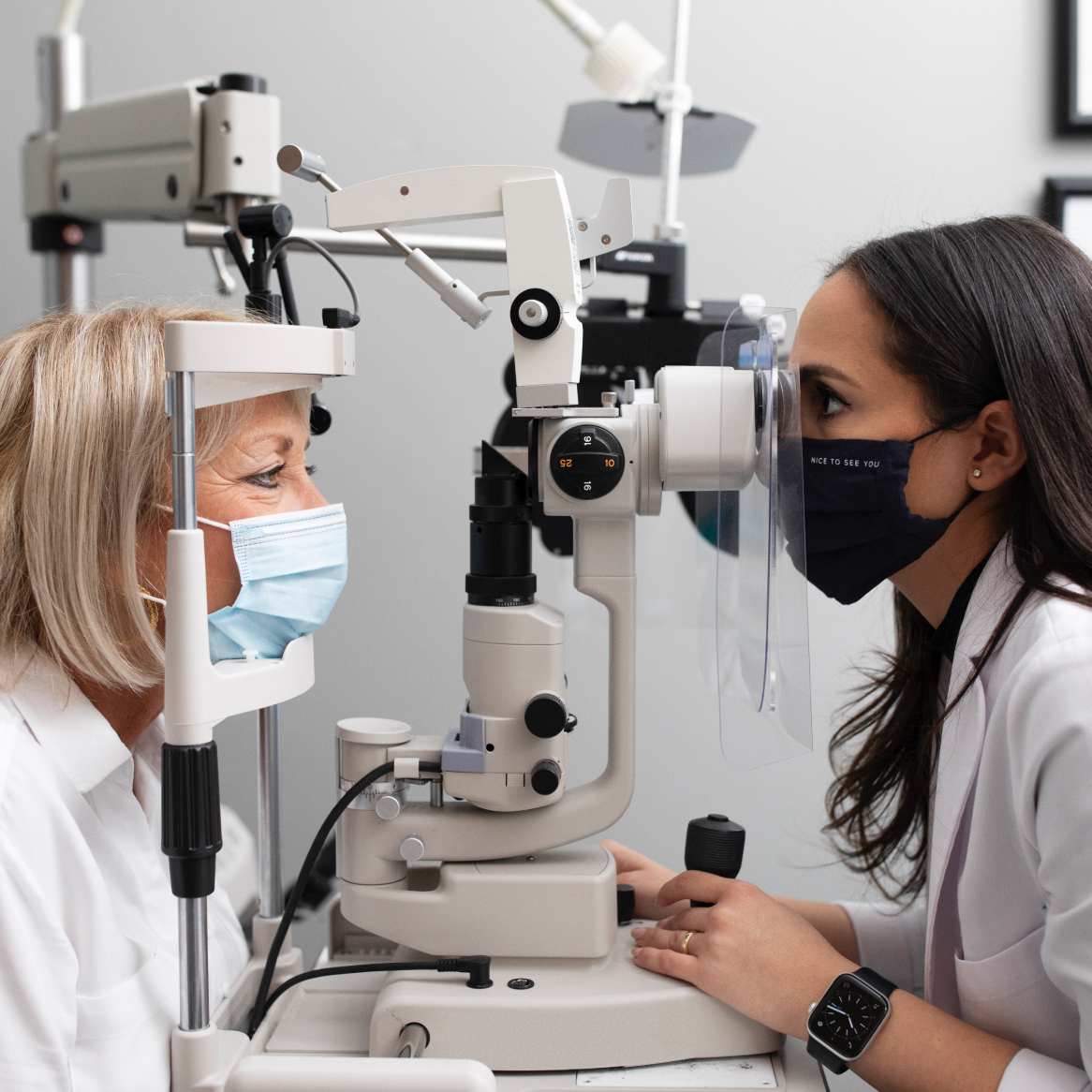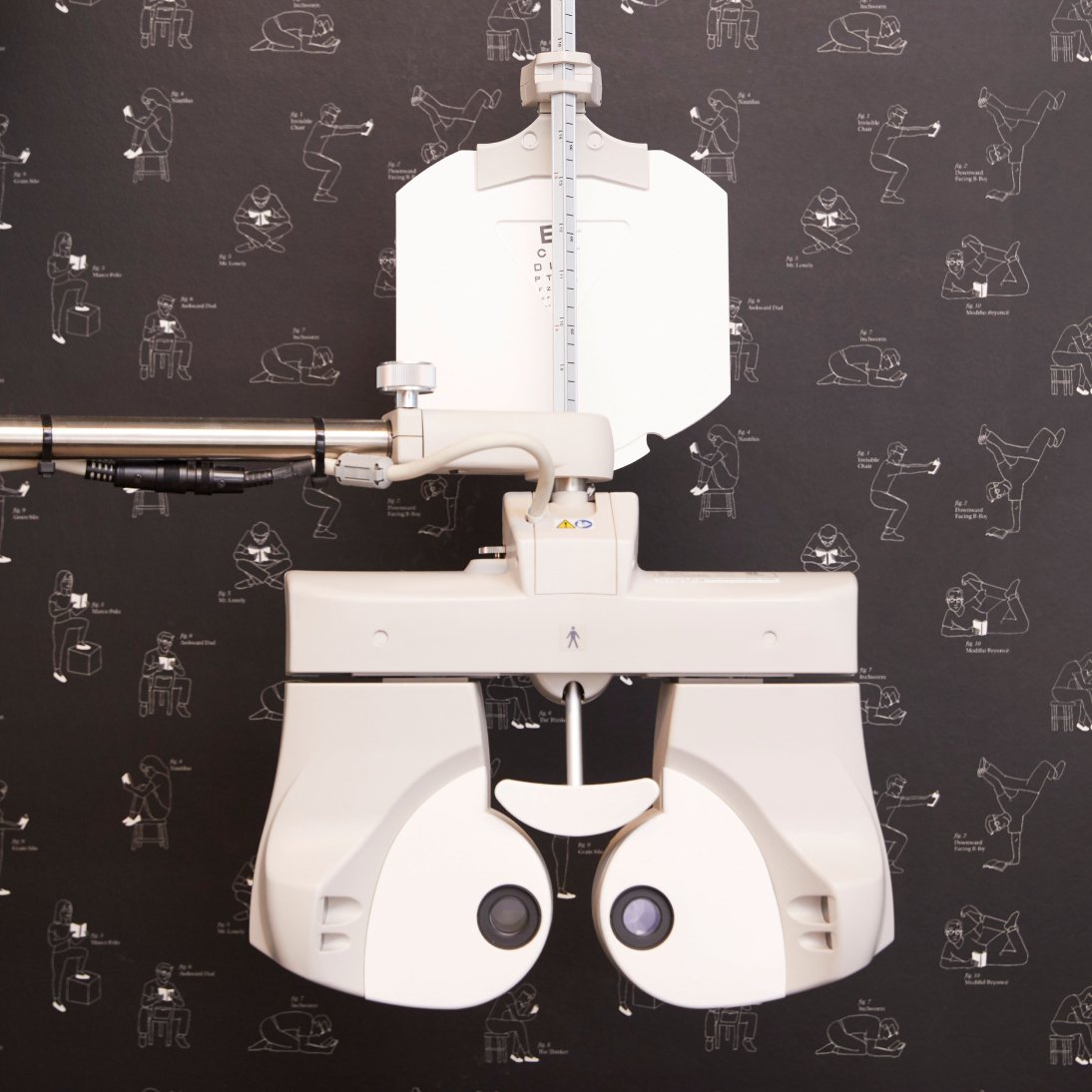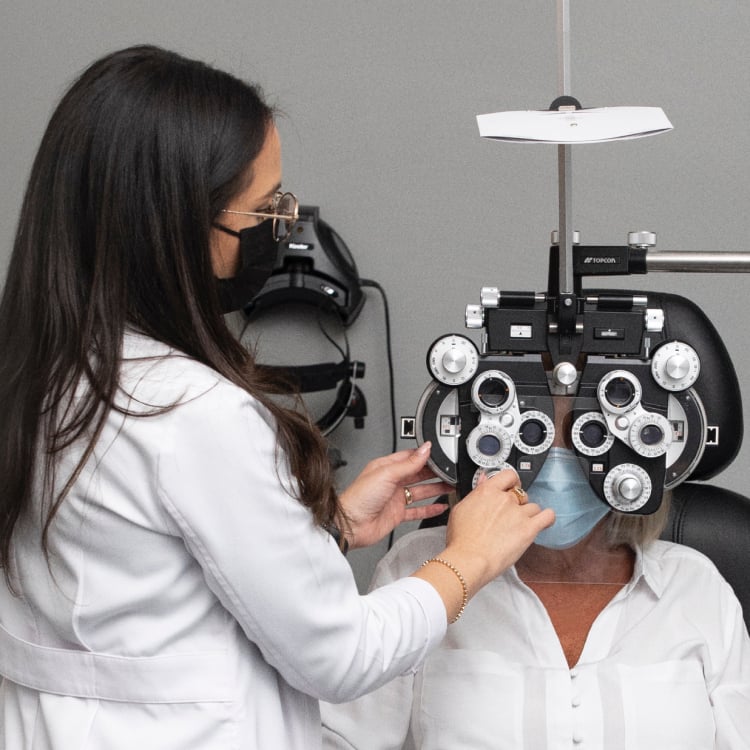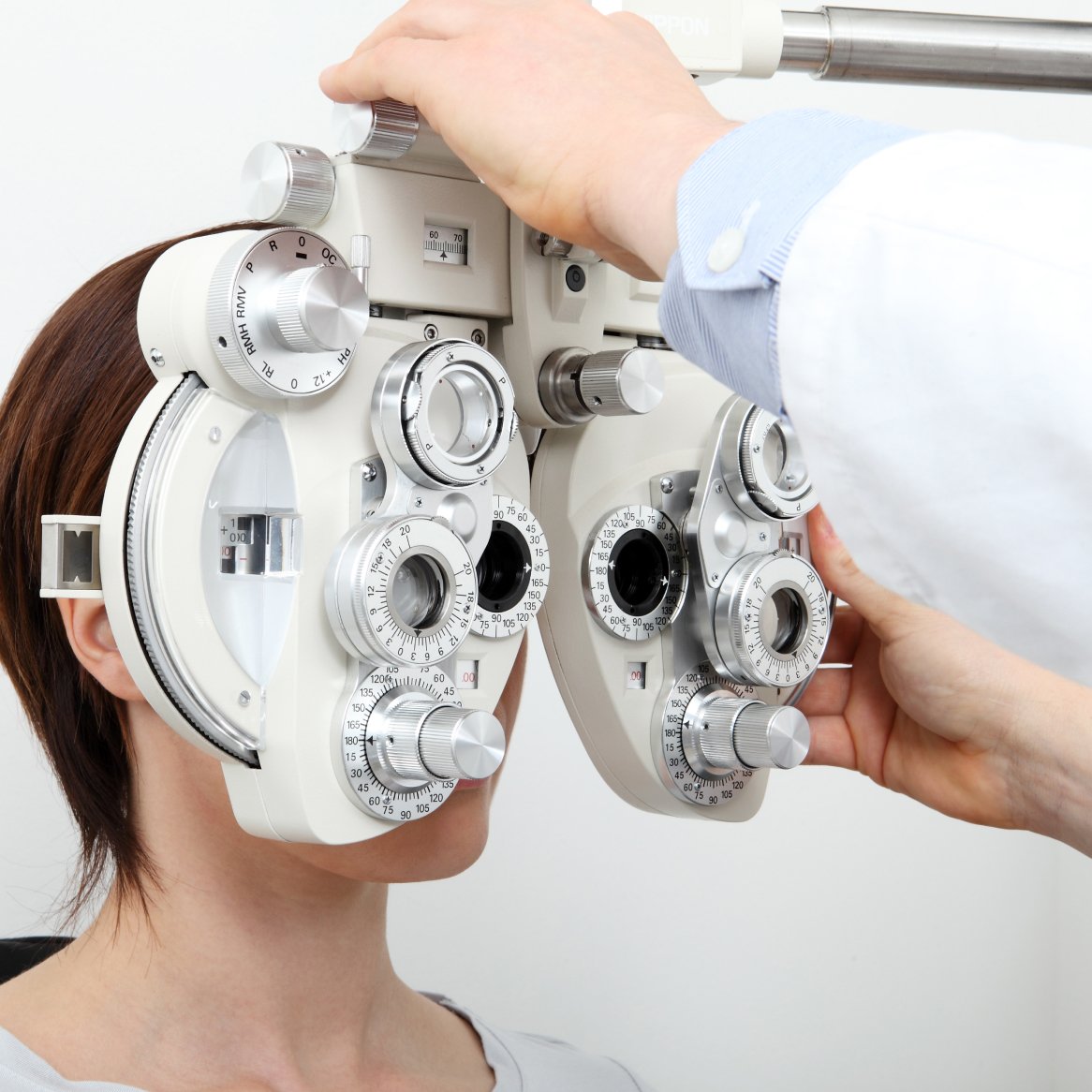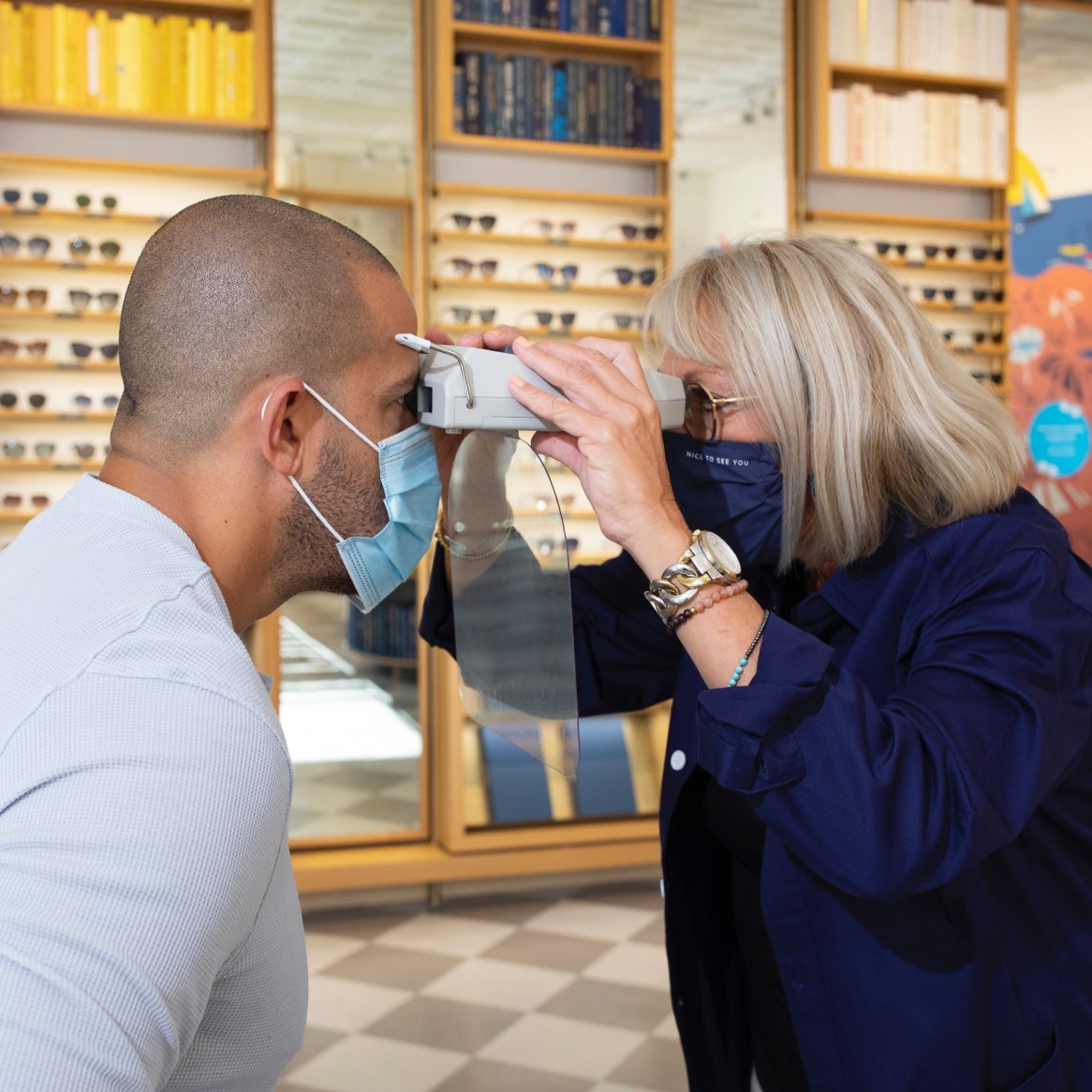A peripheral vision test checks the extent of your range of vision and can detect vision loss that you might not otherwise be aware of—vision loss that could implicate an overarching eye condition (or non-eye-related health concern).
If you’ve ever uttered a phrase like, “I saw something move out of the corner of my eye” (perhaps while on edge after finishing a scary movie), then you’re already familiar with using your peripheral vision. Your peripheral vision is what allows you to see beyond the inner 30 degrees of your central sight line.
In this guide, we’ll take a closer look at the peripheral vision test—what it is, how it’s performed, and why it matters.
What Is a Peripheral Vision Test?
The peripheral vision test (also called a perimetry test) may be performed during a comprehensive eye exam to assess your range of vision across your entire visual field. Each eye is tested for not only how well you see straight in front of you but also on the sides (peripherals) and the areas above and below your central vision.
There are many methods that can be used for checking peripheral vision (more on that in a bit), and a peripheral vision test might not always be performed at every eye exam. Factors such as your age, family history, symptoms, and the presence of certain eye diseases can influence how often your eye doctor performs visual field tests during your regular eye exams.
Why Is Testing Peripheral Vision Important?
An eye test for peripheral vision can detect blind spots or a loss of side vision—which can be indicators of glaucoma and other eye disorders, as well as non-eye-related medical conditions. Plus, a peripheral eye test can often identify side vision loss before it’s noticeable to the patient.
Some examples of conditions that can cause a loss of peripheral vision include:
- Glaucoma
- Diabetes
- High blood pressure
- Multiple sclerosis
- Stroke
- A brain tumor
As for when peripheral vision is most important, the fact is that peripheral vision plays a huge role in your day-to-day activities—even when you may not realize it.
Your central vision is only the inner 30 degrees of your full field of vision—peripheral vision covers the rest. Your peripheral vision extends 100 degrees laterally, 60 degrees medially, 60 degrees upward, and 75 degrees downward.
So, as you can imagine, peripheral vision loss would have a significant impact on things like driving, playing sports, and any other activity that requires awareness of objects around you.
How To Test Peripheral Vision
Peripheral vision testing can be done with or without a machine (called a perimeter). And there are many different methods for performing perimetry. When tests are performed using a perimeter, keep in mind that the targets are usually repeated multiple times. This is because of the subjective nature of the test and will help your eye doctor determine the reliability of the results.
Tests Used for Peripheral Vision
Confrontation Test
Your optometrist or ophthalmologist will have you cover one eye and focus on a point directly in front of you (often one of the doctor’s eyes). Then, while you keep focusing on that point, your eye doctor will hold up fingers in your peripheral vision and ask how many you see. The doctor will complete this test one eye at a time.
Automated Perimetry Test
This test uses equipment called a perimeter. You’ll look into this dome-shaped machine and focus on a point straight ahead. The machine will flash automated lights of varying brightness and size across the dome, and you’ll press a button whenever you see the light.
Frequency Doubling Perimetry
The perimeter machine is also used for this test. But in this case, the machine uses flickering targets or lights to test peripheral vision.
Kinetic Perimetry
This type of peripheral vision loss test can be automated on a screen or performed manually—the manual version of this test is called Goldmann kinetic perimetry. During this exam, you’ll look at a point in your central vision while a light is introduced at the side and moved toward that central point. You’ll indicate when you’re able to see the light (usually by pressing a button).
A Peripheral Vision Test Is a Key Part of Your Eye Exam
By testing your peripheral vision, your eye doctor will be able to detect potential visual field issues and related health conditions. Just another reason why regular eye exams should be a main component of your overall health care. Book an appointment if you’re due for an exam or have any concerns you’d like to discuss with an eye doctor.

